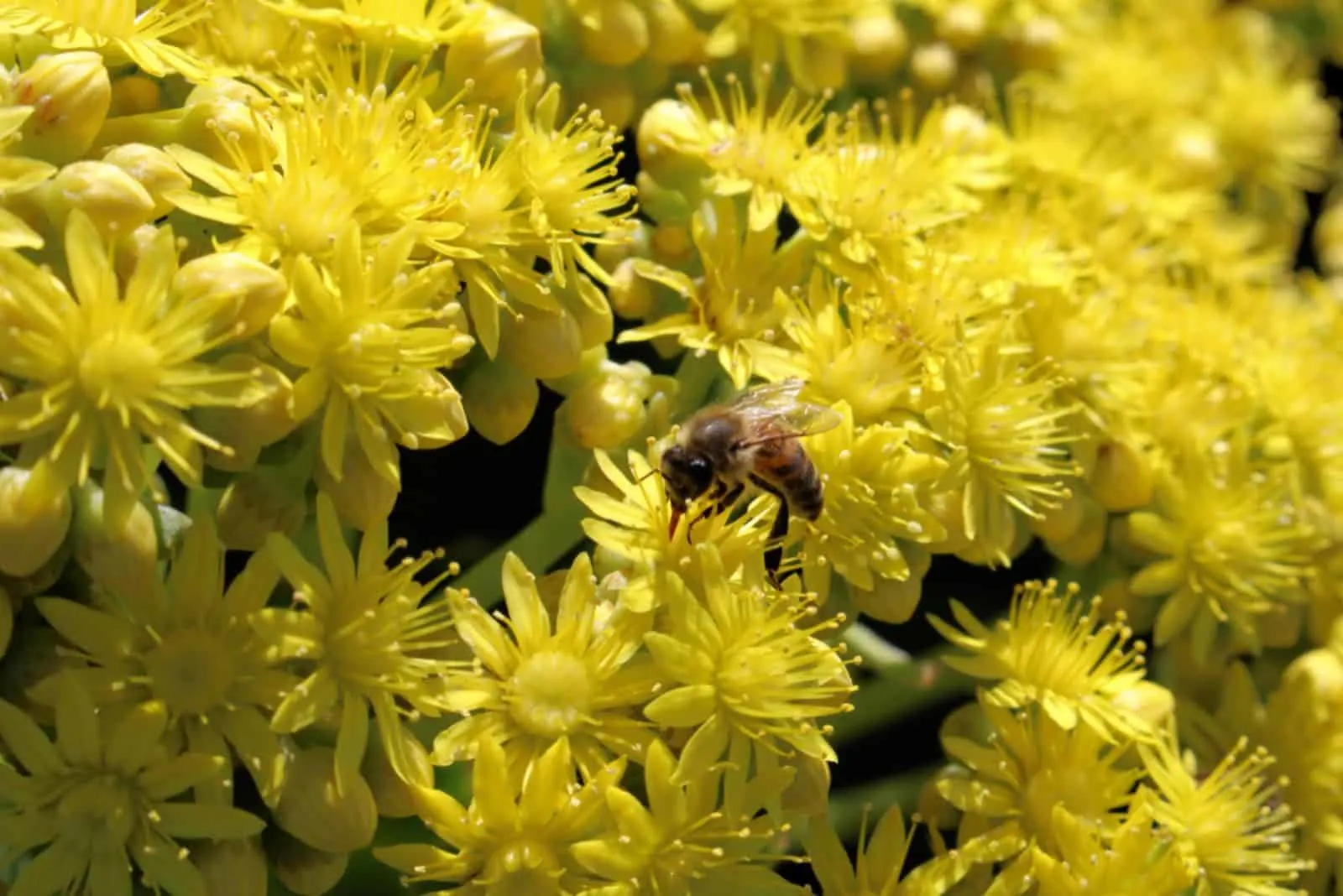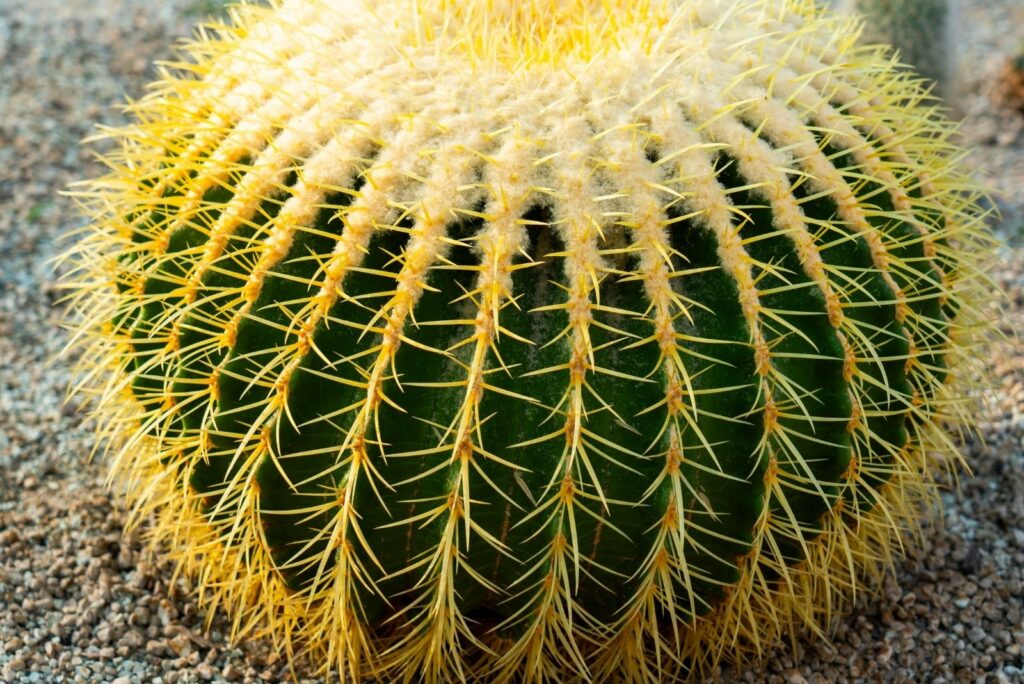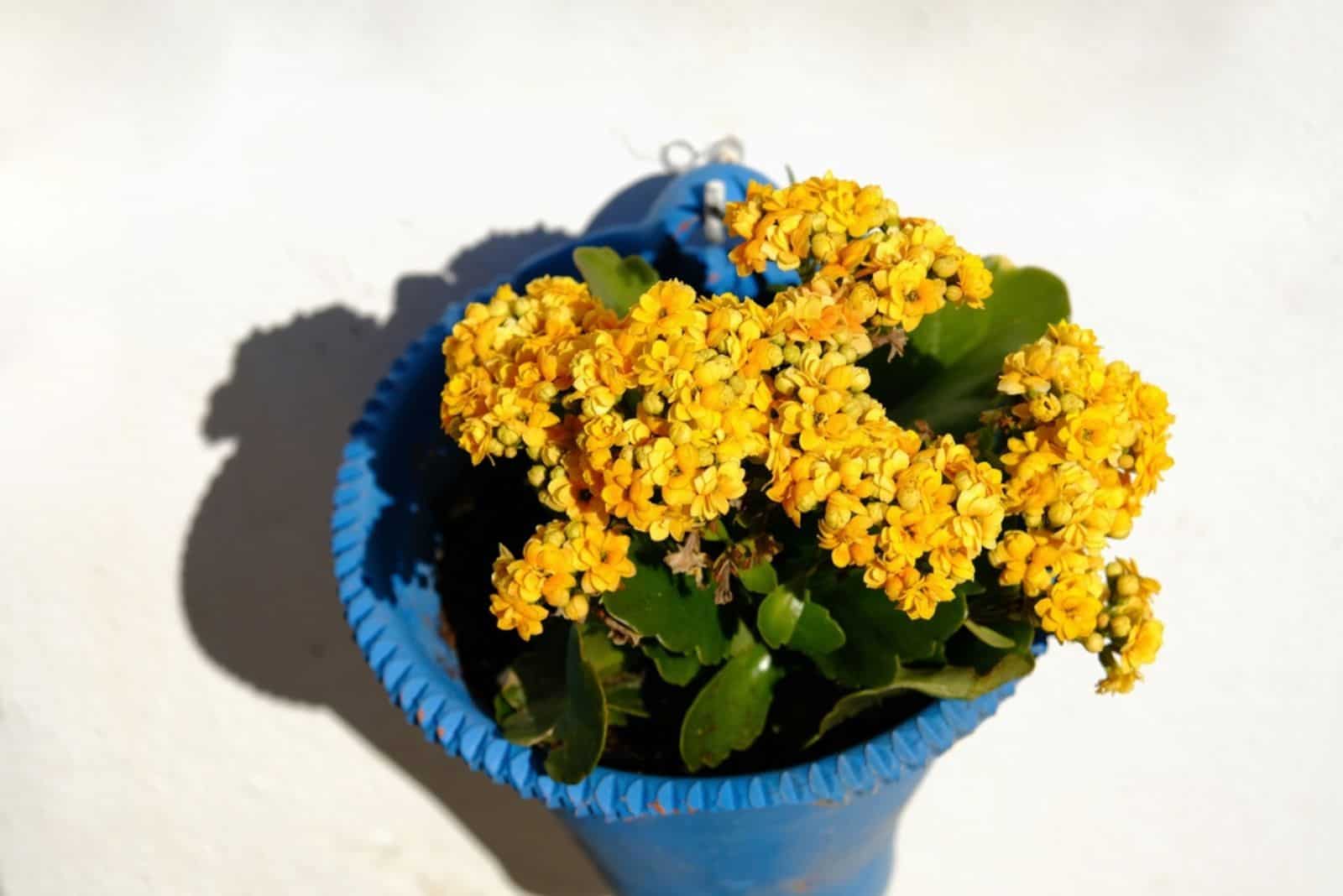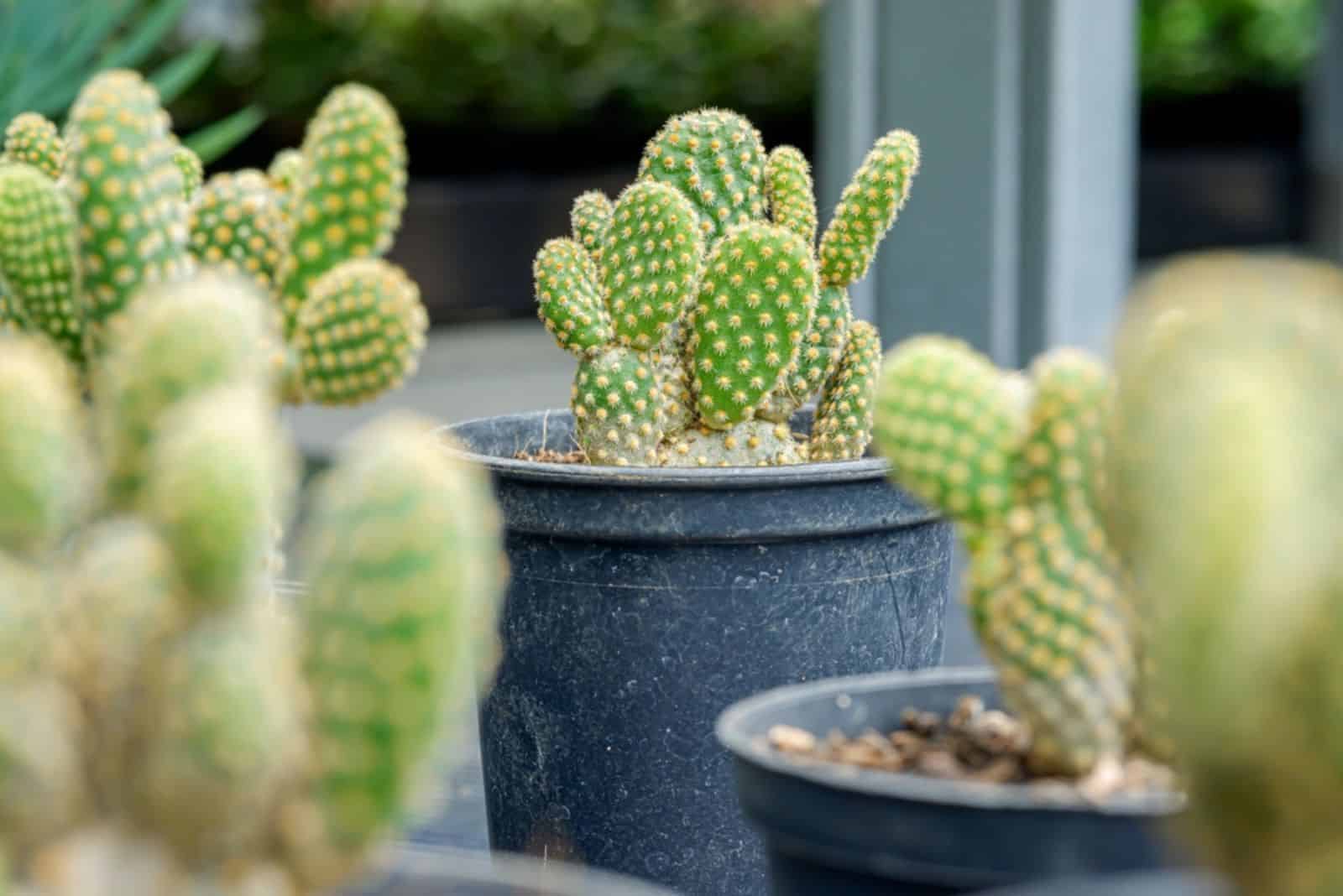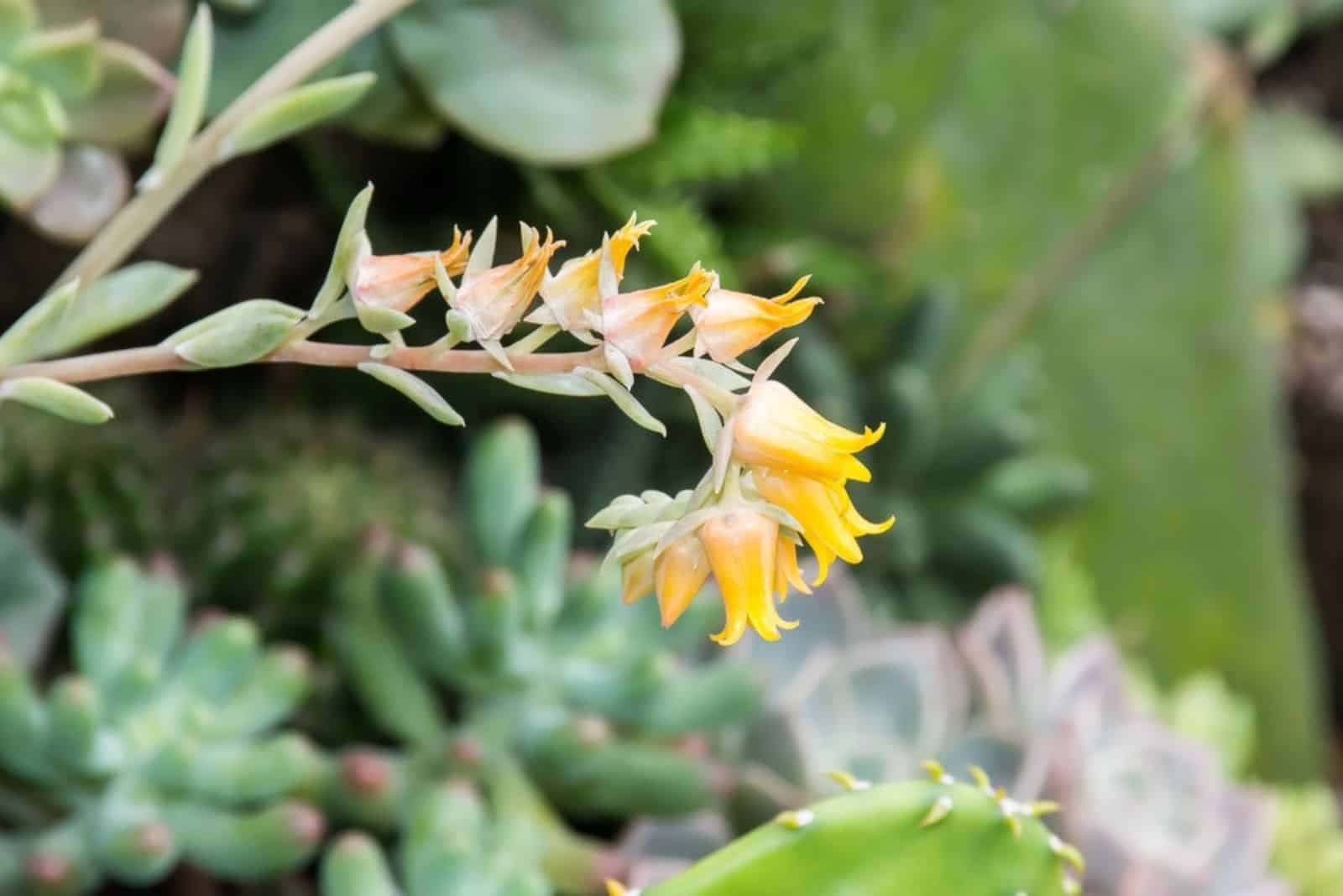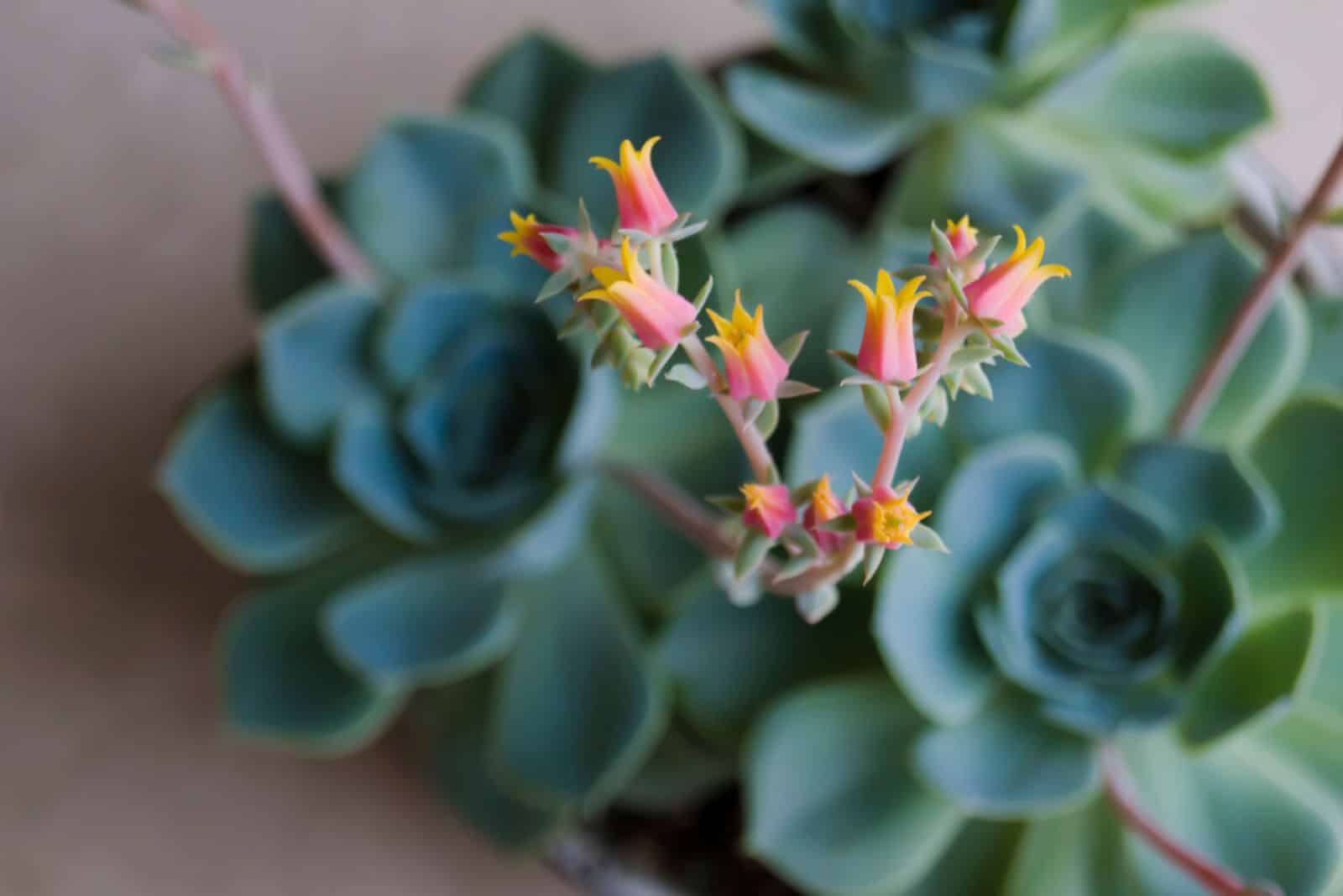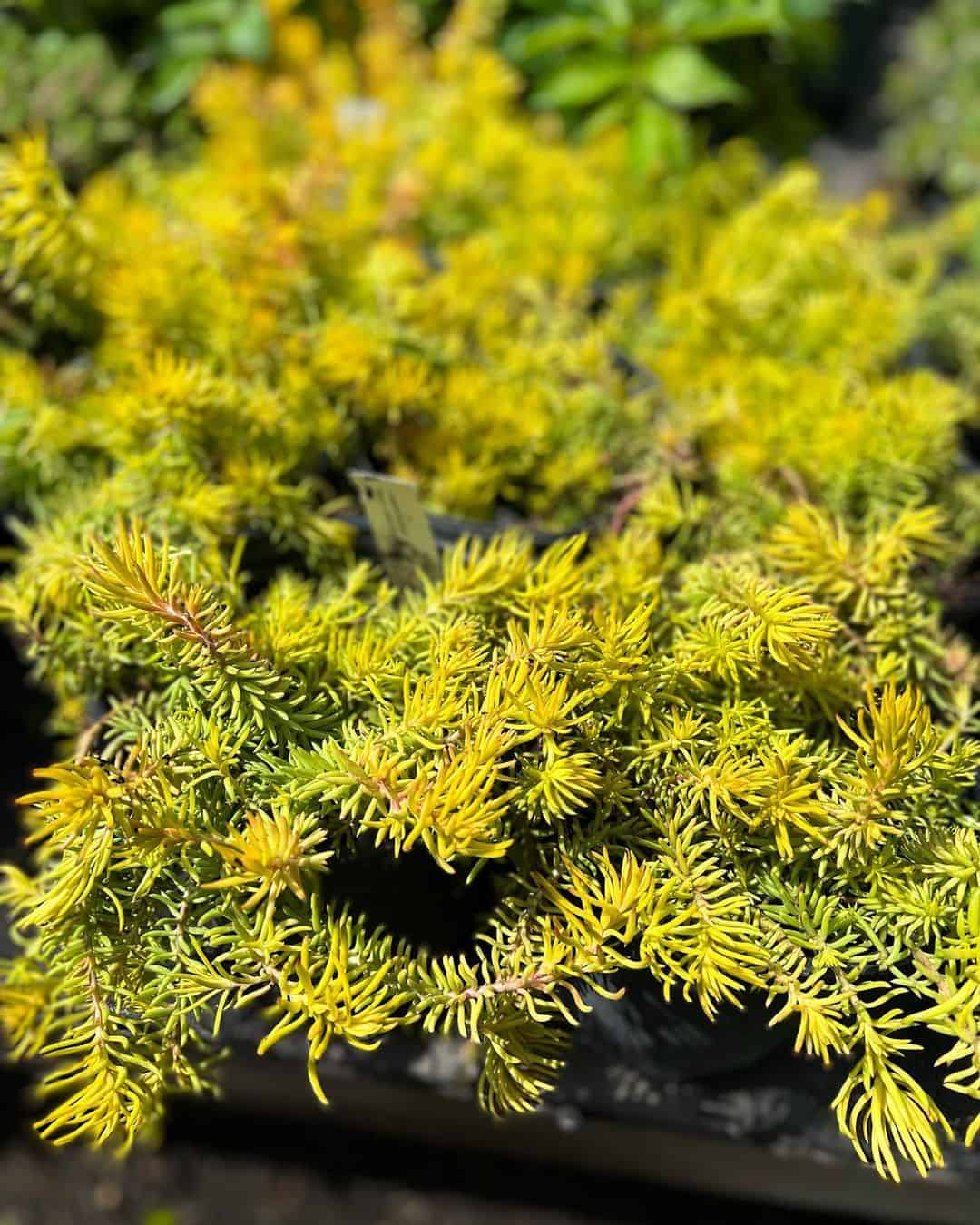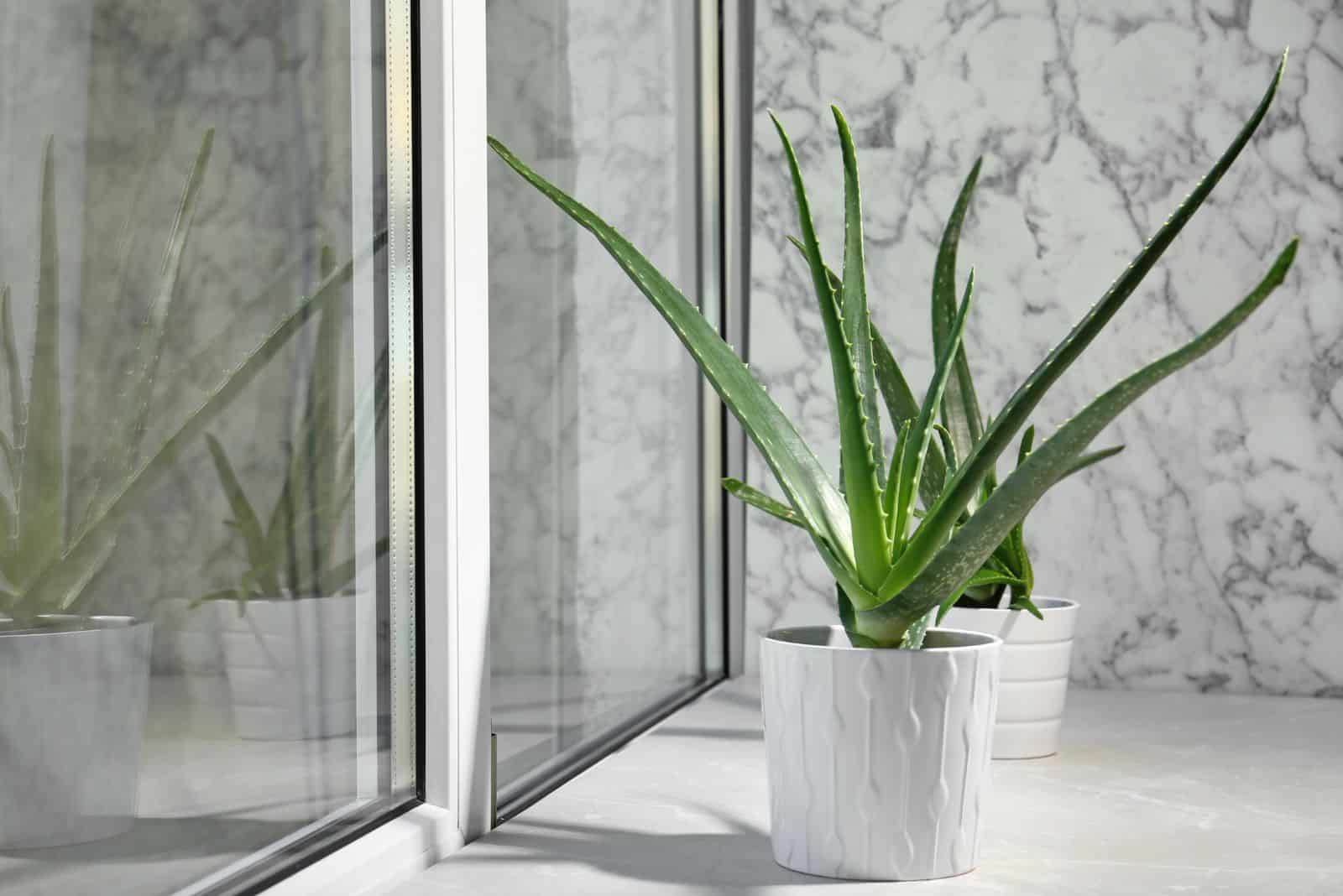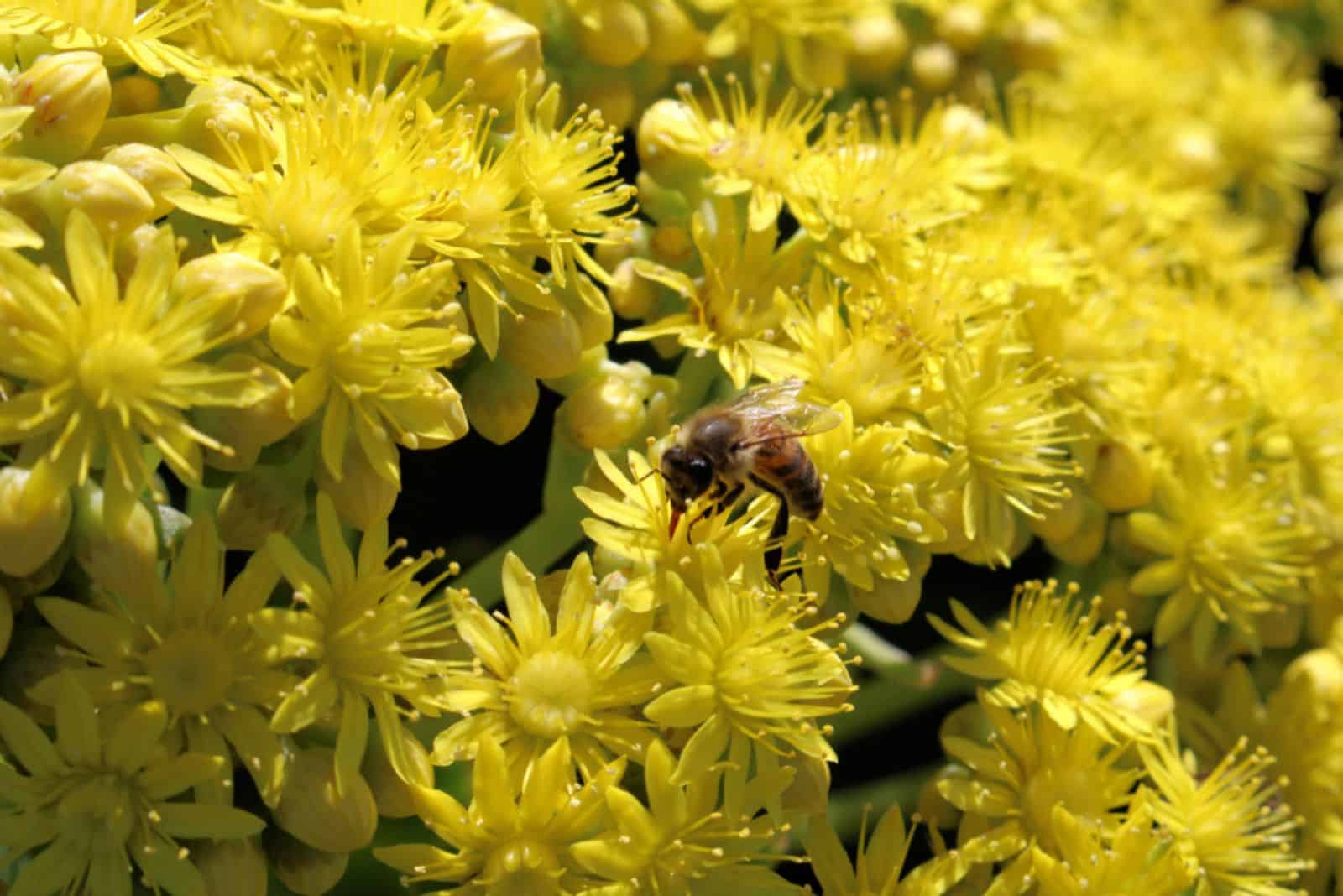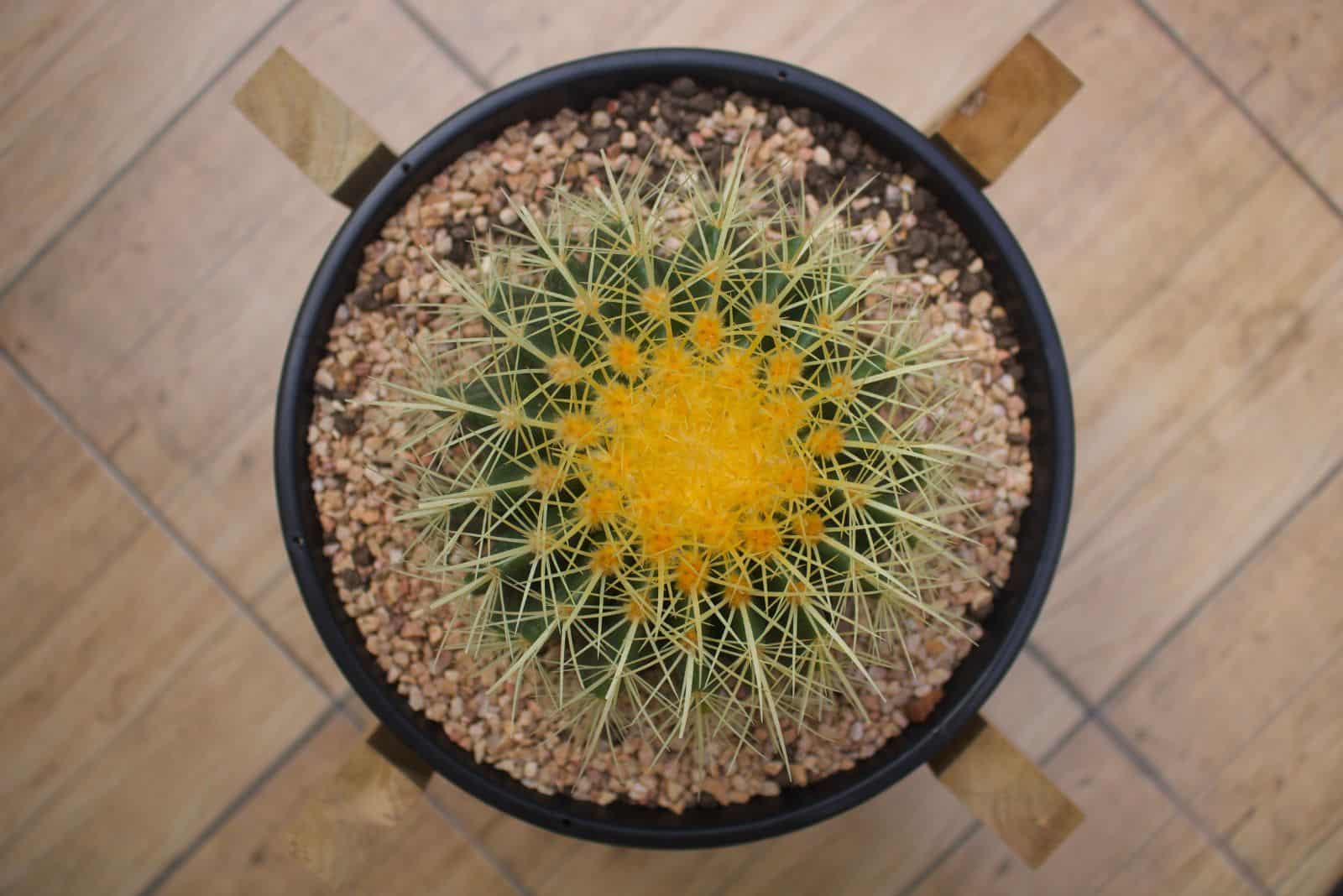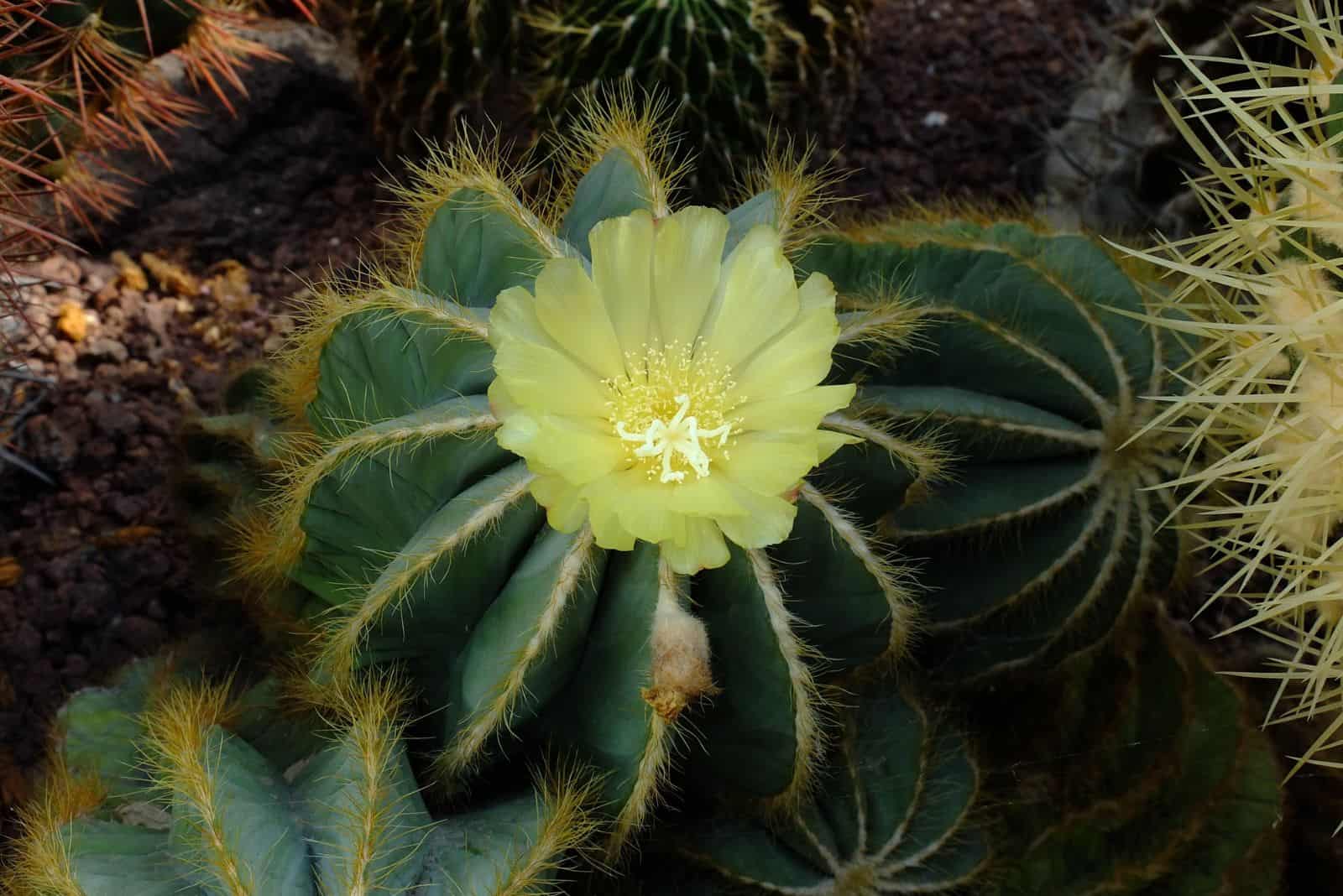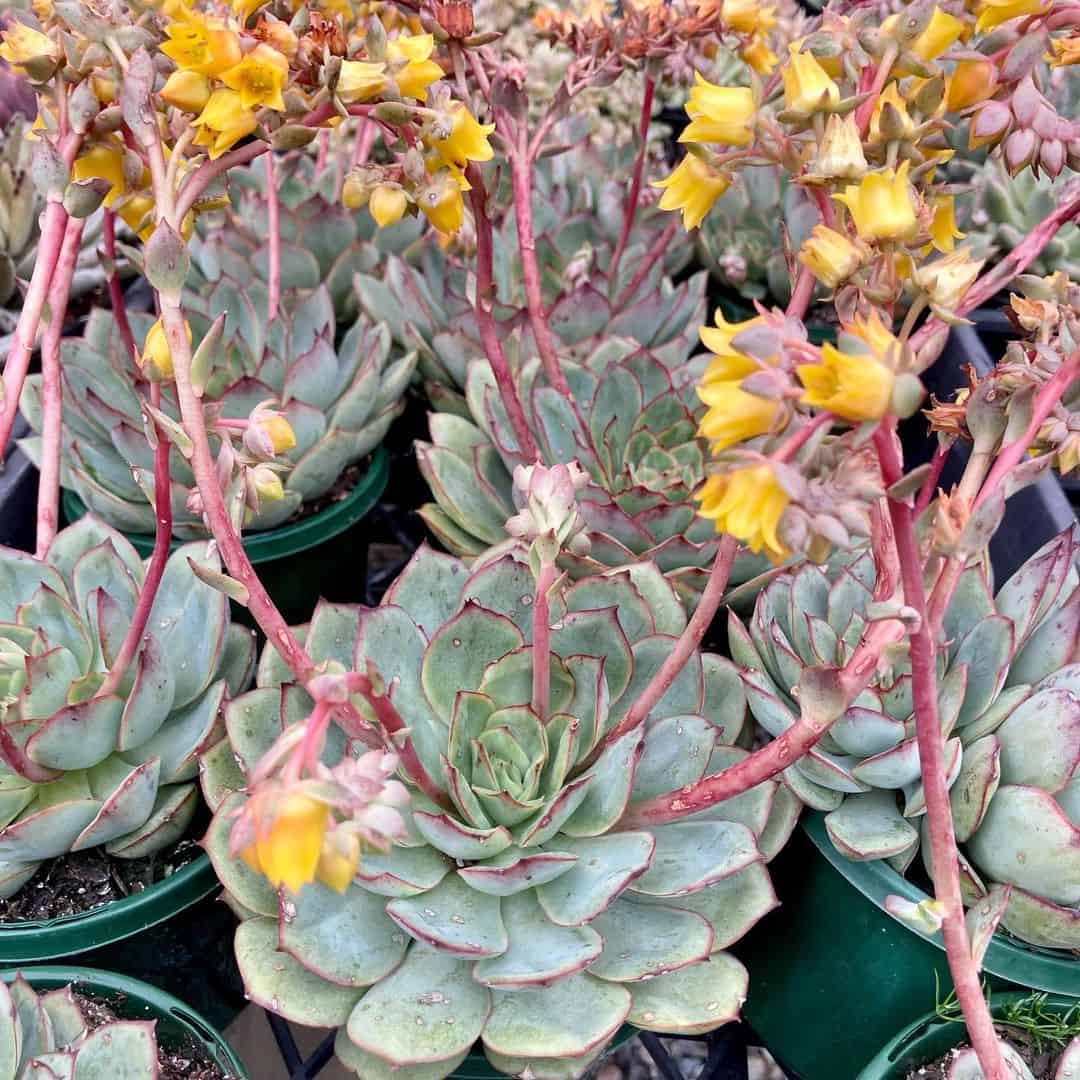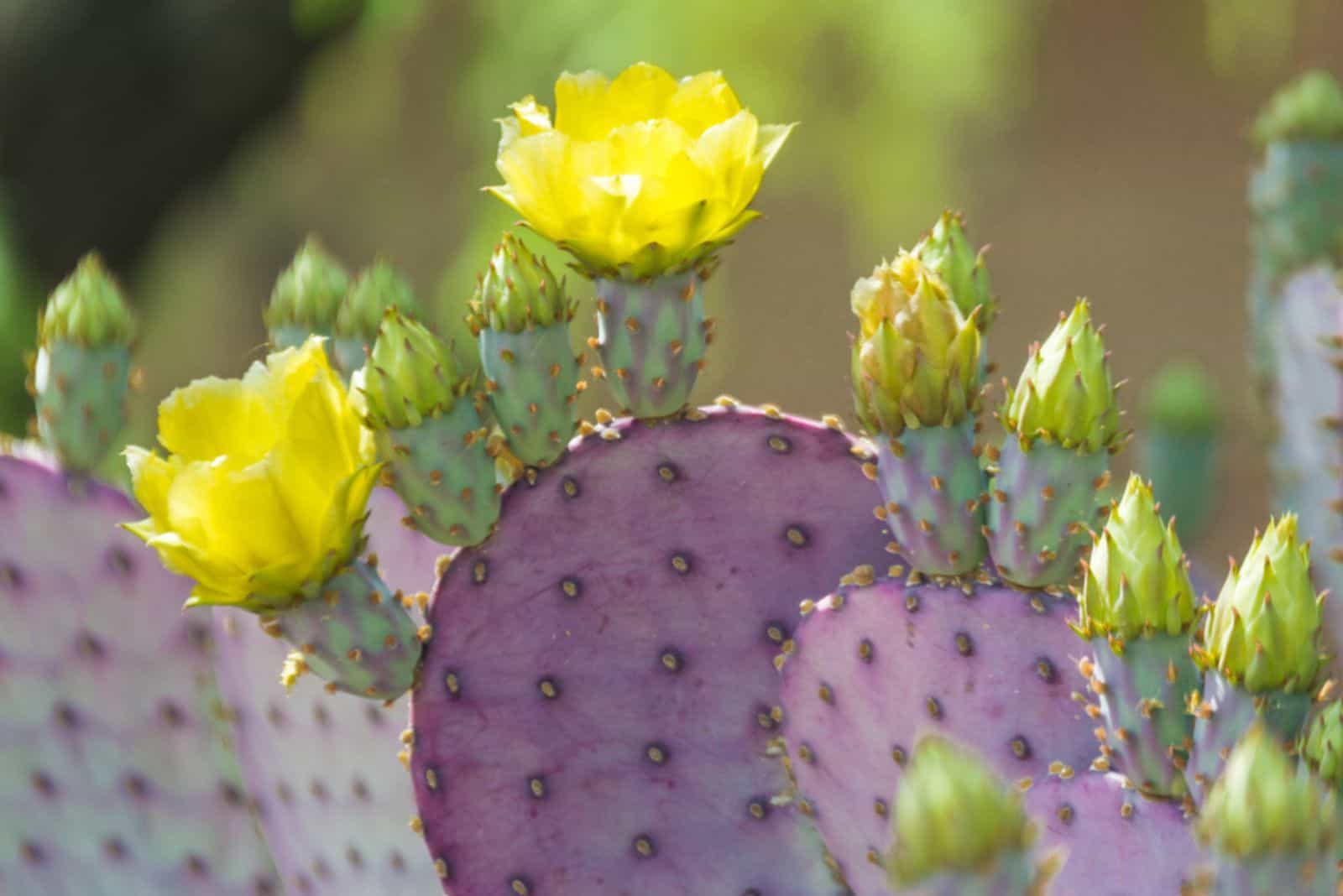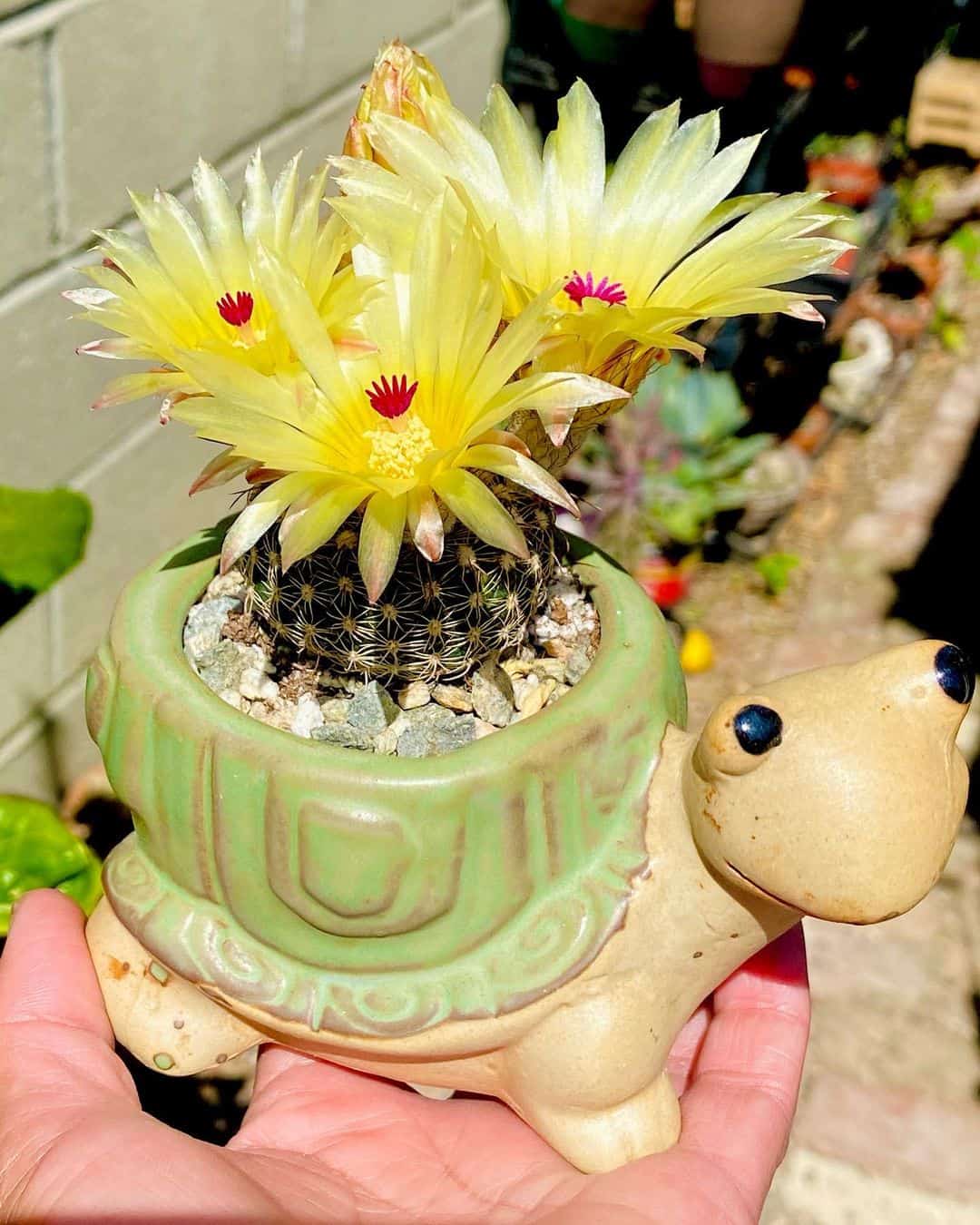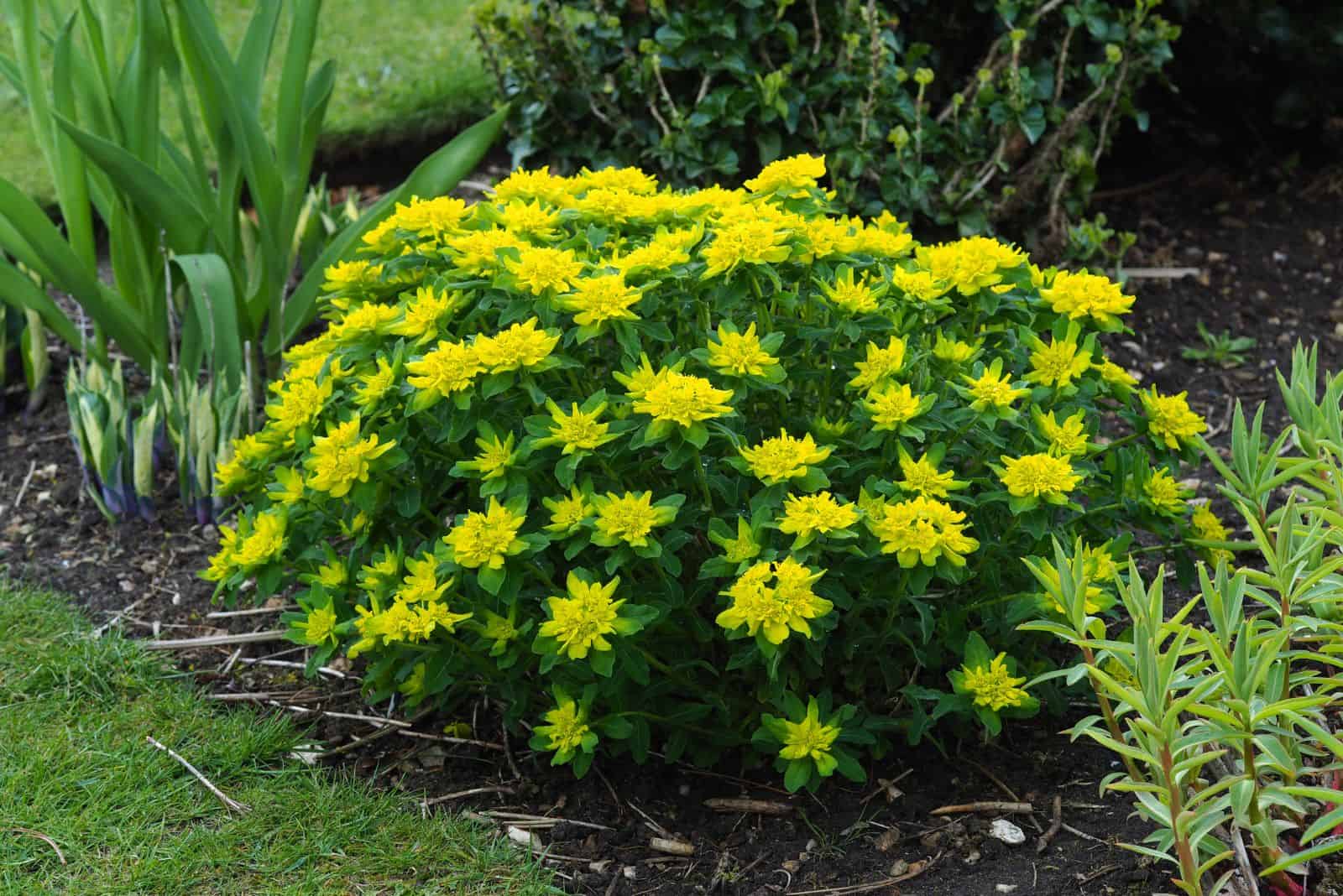There aren’t many growers that don’t have at least one succulent in their plant collection. You can choose from among many specimens, and each one looks amazing.
Additionally, these plants are drought-tolerant, which makes them hard to kill. This means that if you are a novice gardener, your first plant should definitely be a succulent.
If you love yellow flowers and want to grow a succulent, you are in the right place to find some of the best succulents with yellow flowers!
I’ll also show you the main features of each of these beautiful succulents, as well as some tips for growing them.
Let’s get started!
17 Succulents With Yellow Flowers
There are a great number of genera that include succulent plants. Some of the best succulents with yellow flowers include:
• Kalanchoe blossfeldiana
• Echeveria pulidonis
• Wormleaf stonecrop
• Golden barrel cactus
• Yellow ice plant
• Aloe vera
Let’s see some more!
1. Kalanchoe Blossfeldiana
The Florist Kalanchoe is one of the most famous houseplants.
It belongs to the Crassulaceae family, and the scientific name for this incredible plant is Kalanchoe blossfeldiana.
The leaves resemble scallops, and what makes this specimen stand out from other succulents is its long blooming season.
It’s a well-liked, simple-to-grow Kalachoe variety that does well in dry settings. This specimen has a slow growth rate and produces blooms during Christmas.
If you want to add a plant with yellow blooms to your holiday decorations, then the Kalanchoe blossfeldiana is a perfect choice.
The humidity requirements of succulents are pretty low, but the Kalanchoe does well in a more humid environment.
Interestingly, this plant is one of the succulents that likes humidity.
2. Bunny Ears Cactus
The Opuntia microdasys, which you can find under the name Bunny ears cactus, is not only eye-catching, but also easy to care for, which makes it the perfect plant for novices.
Despite its adorable appellation, the Bunny ears cactus is equally as thorny as other cacti species with intimidatingly big spikes.
When you look at it, you might think it’s a completely harmless plant, but the plant got the nickname “Polka dot cactus” due to the white dots on its succulent leaves.
However, these aren’t just dots, but rather glochids, i.e., tiny spikes, so I highly recommend wearing gloves for cacti when handling this specimen.
It may be challenging to get it to bloom, but it’s not impossible. If you want to enjoy some yellow flowers, ensure warmer temperatures, low humidity, a lot of bright light, and feed your cactus with 5-10-10 fertilizer.
3. Echeveria Pulidonis
Echeverias are very common indoor plants that come in different shapes and colors. One of the most amazing Echeveria cultivars is Pullido’s Echeveria, aka Echeveria Pulidonis.
It produces stunning bright silverish-green leaves and unique bright yellow flowers. The tips and edges of the leaves come in red; you must admit the combination of colors on this plant is breathtaking!
It has a pretty slow growth rate, but it will develop into rich clumps, so it’s worth waiting.
Pullido’s Echeveria can reach up to 8 inches in height. This lovely plant performs best in free-draining, sandy soil blends and enjoys full sun.
If you live in warmer climates, i.e., USDA hardiness zones 9 through 11, your Echeveria will thrive in your outdoor home garden.
4. Echeveria Elegans
Another amazing Echeveria flower is the Echeveria elegans, commonly referred to as the Mexican snowball.
This award-winning plant species produces lovely, fleshy leaves that can be bluish or silverish-green. The blossoms of this specimen are pink with yellow tips.
The elegans variety is a perfect indoor plant, but if you live in warmer regions you can cultivate it outdoors to decorate patios or add it to your rock garden,
It’s a relatively disease-free houseplant and performs well in full sun, but also tolerates partial shade.
If you want your elegans plant to form into lovely rosettes and produce blooms, you need to ensure well-draining soil and warmer temperatures.
5. Angelina Stonecrop
The Sedum rupestre ‘Angelina’ flourishes in rocky, gravelly terrain. When grown as a houseplant, this lovely Sedum species can survive long periods of drought.
It can reach up to 6 inches in height and 3 feet in width, making it an excellent ground cover plant.
The Angelina stonecrop develops golden foliage and tiny, star-shaped, yellow blossoms that appear in summer.
You’ll need to wait for a year or two until your Sedum rupestre plant starts blooming. Luckily, this plant will bloom every year when well-established.
Remember that these plants won’t bloom if they don’t receive enough bright light. If you grow them as houseplants, put them near sunny windows to encourage growth and flowering.
Additionally, never let your stonecrop sit in overly wet soil because it won’t produce blooms and will most likely die.
You’ll need to remove flower stalks after the blossoms fade. Perfect conditions may also induce another set of blossoms.
6. Aloe Vera
Aloe vera is not just one of the most famous Aloe plants, but also one of the most famous succulents in general!
The elongated, lush green foliage makes Aloe vera plants perfect for every household.
Its stunning appearance isn’t the only thing the Aloe plant has to offer; the gel is extracted and frequently used for bruise and skin treatment.
Wait! I’m not done yet: these plants are also air purifiers, which means they’ll eliminate toxins such as benzene and aldehydes from the surrounding air.
If this doesn’t convince you to grow these lovely plants, then the flowers definitely will! Yellow flowers that grow on tall stems will make your garden prettier than ever. If you don’t live in USDA hardiness zones 10 through 12, your Aloe will flourish indoors!
One more thing; don’t confuse Aloe vera with Aloe ferox!
7. Aeonium Arboreum
If you aren’t familiar with the name Aeonium arboreum, maybe Tree houseleek rings a bell! This lovely plant variety initially grew in the Canary Islands and is a favorite houseplant of many growers.
This tall succulent plant is one of the hardest plants to kill, so if you are a beginner and looking for a plant with yellow blossoms, I highly recommend the Aeonium.
This flowering plant has one special feature; while many other plants sleep during winter, Aeonium is wide awake and will keep producing blossoms through late spring.
You won’t be thrilled when you hear that this specimen dies after blooming. However, there’s one thing you can do!
If you remove the flower stalks right after flowering, you’ll encourage new growth on the stump where the flower stalk was.
Bear in mind that this is a time-consuming process, so don’t expect new growth immediately.
These plants are drought-tolerant, so make sure the growing medium is free-draining because that’s the best way to avoid root rot.
8. Golden Barrel Cactus
If you need some cost-effective desert landscaping ideas, let me give you a great suggestion. The Golden barrel cactus will make a great addition to any garden.
This specimen has a lovely round shape, hence the term barrel in the name. This cactus may look cute, but its spikes are far from it.
Similarly to the Bunny ears cactus, the Golden barrel species features sharp spines that can cause immense pain (don’t ask how I know!).
Therefore, if you’re planting this cactus outdoors, pay attention to where you put it, especially if you have small children or pets.
Regular feeding, full sun, and well-draining soil will encourage your Golden barrel plant to produce breathtaking yellow bell-shaped blossoms.
9. Parodia Magnifica
Another award-winning succulent is the Ballon cactus, scientifically known as Parodia magnifica. It can reach up to 6 inches tall and produces clusters of spherical, ribbed, and spiky stems.
This is one of the rare succulents that’s grown mainly for its blossoms. The Magnifica’s beautiful flowers are funnel-shaped and yellow.
The care requirements of the Ballon cactus are pretty low, making it a perfect plant for every household.
Bear in mind that the Parodia magnifica plant won’t produce blossoms if given too much full sun.
This specimen, like its relatives from the Cactaceae family, can tolerate prolonged periods of drought.
Due to this feature, a free-draining growing medium is essential for optimal growth.
This is a flowering plant, so it will be happy if you fertilize it with all-purpose fertilizer during the growing season.
10. Echeveria Dondo
This Echeveria plant is indigenous to hot, dry regions of Mexico and can survive with little to no watering.
It is a perennial plant, so if given the appropriate conditions, it will flourish every year and adorn your household for many years to come.
The dondo plant produces eye-catching yellow and orange blossoms.
If you live in USDA hardiness zones 9 through 11, the Echeveria dondo will thrive in your outdoor garden.
Regarding care requirements, they’re almost the same as for other Echeveria species. You’ll enjoy the yellow flowers if you give your dondo plant enough bright light and cultivate it in a well-draining growing medium.
11. Prickly Pear Cactus
You can give cute nicknames to your cactuses, but there’s no need for that when it comes to the Opuntia humifusa!
This is one of the most famous cacti species and definitely one of the hardiest. The humifusa plant is a dwarf specimen that can reach up to 12 inches in height.
The blooms, which emerge in the middle of summer, come in dazzling yellow, and the plant also features wedge-shaped, slender spines.
Interestingly, the blossoms give way to tasty purple or crimson fruit frequently used for making jelly.
The watering needs of cacti plants are low, and the Prickly pear isn’t an exception. This succulent will go through dormancy until late winter, so if it looks kinda unhealthy, don’t panic; it will be back on track as soon as spring comes.
If you live in colder climates (4a and up), you can cultivate the Prickly pear outdoors.
12. Indian Head Cactus
Another succulent with yellow flowers is the Parodia ottonis, commonly known as the Indian head cactus.
Interestingly, there are plenty of varieties of this plant; each variety exhibits drastically different traits depending on the habitat.
If you are a beginner grower, I highly recommend the Indian head cactus as your first plant.
This is a small plant that typically doesn’t exceed 6 inches, making it perfect for smaller rooms.
The Mature Parodia ottonis is round-shaped, and the densely packed spines that cover the areolas can be somewhat dangerous if handled carelessly.
The flowers often have a brilliant yellow exterior with a crimson core, and emerge from the top of the plant.
It thrives on a bit of neglect, and all you need to ensure is suitable soil for cacti plants, enough bright light, and irrigation when the soil is completely dry.
13. Euphorbia Polychroma
Growing succulent plants as border plants is a remarkable idea! One of the best species to grow for that purpose is the Euphorbia polychroma.
This long-lasting plant produces amazing golden flowers that develop on erect stems.
The blossoms occur in spring and last until late summer. When fall approaches, the foliage turns vivid red to purplish, making the plant look impressive during all seasons.
Although this Euphorbia tolerates partial shade, it will perform best if given full sun.
This plant typically reaches 18 inches tall, but some of its cultivars, such as Bonfire, won’t exceed 10 inches.
I have to mention that the Euphorbia polychroma is another hardy succulent that will thrive in USDA hardiness zones 4 through 9.
14. Yellow Ice Plant
If you are looking for a succulent with yellow flowers to grow as a groundcover, I have the perfect plant for you!
Meet the Yellow ice plant, scientifically known as Delosperma nubigenum.
This specimen produces an abundance of daisy-like, bright yellow flowers, and the flowering season starts in late spring and ends in early fall.
Once the blooming season ends, the leaves turn bronze.
This succulent doesn’t exceed 3 inches tall, and the flowers are so densely packed that you won’t see the foliage until they fall off.
The Yellow ice plant tolerates heat and drought, and the main thing to pay attention to is soil drainage.
The roots of this specimen are very sensitive to fungus, and if the soil is overly wet, they could quickly rot.
15. Star Cactus
The Star cactus, as you can assume, is a star-shaped cactus specimen that is widely cultivated as a houseplant.
This amazing succulent plant produces orange, yellow, and red flowers. The outer part of the plant is coated with incisive spines.
These are relatively slow-growing plants, which is why you’ll often come across the name living rocks.
Unlike most other succulent species listed above, this plant can grow up to 6 feet tall.
If you are a novice gardener, I have to warn you that this plant species can be finicky about its growing conditions. Therefore, it might not be the perfect first plant.
This cactus doesn’t tolerate shade and will reach its full potential only if it receives at least six hours of full sun daily.
When you notice the growing medium of the Star cactus is completely dry, irrigate it well. Also apply a balanced fertilizer once a month during the growing season to encourage blooming.
Even though it may be challenging to grow this specimen, I definitely think it’s worth it!
Step away Christmas cactus, a true star is born!
16. Conophytum Bilobu
Another amazing succulent that produces yellow blossoms is the Living pebble, botanically known as Conophytum Bilobum.
This short-stemmed species develops fleshy leaves that come in pale green or bluish-green.
The odorless yellow blossoms are typically seen in fall. The flowers open as soon as the sun rises, and you can enjoy them until night.
Free-draining soil and plenty of bright light will keep your Conophytum bilobum plant healthy and encourage it to develop flowers.
17. Sedum Acre
The last plant on this list is the Goldmoss, scientifically known as Sedum acre. This adaptable plant is ideal for a rock garden and does well in poor, sandy, or rocky growing mediums.
This Sedum requires little maintenance and is suitable for container growing.
The leaves are fleshy and densely packed, and you can expect to see star-shaped, yellow blossoms in late spring.
This is a self-seeding plant species, so the only thing you need to do to get more Sedum acre plants is remove the stems and root them in a suitable growing medium.
FAQs
What is the difference between a succulent and a cactus?
The cactus is a plant from the Cactaceae family. All plants from this family are succulents because they have fleshy leaves that hold water.
However, these aren’t the only succulent species; Jade plants, Aloes, and Snake plants are all succulents, but they aren’t cacti.
Therefore, all succulents aren’t cacti, but every cacti specimen is a succulent.
What are the different colors of succulents?
Believe it or not, over 25 plant families are considered succulents, which means the color palette is very rich.
For instance, the Christmas cactus features green foliage and red flowers, while the Sunset Jade succulent has golden yellow leaves with white and lavender flowers.
Some sedums, aka stonecrops, come in green, red, and purple, whereas some Echeveria plants feature bluish-green or multicolored leaves (green leaves with red tips).
Wrapping Up
Who doesn’t like succulents? I mean, these plants look incredible and they’re very drought-tolerant, so it’s really hard to kill them.
Succulents come in various colors; if you were looking for succulents with yellow flowers, I’m sure you found one (or more) to add to your houseplant collection.
You can also cultivate all these species outdoors, but pay attention to their hardiness and choose the species depending on your USDA growing zone.
No matter which succulent you choose, I’m sure you’ll enjoy it!
Until next time!

